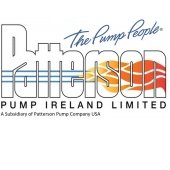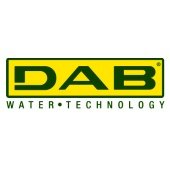Drainage solutions Make complex projects a reality

Drawing on real-life examples, Saniflo looks at of how macerators and pumps are used to overcome severe drainage challenges.
For the past 60 years, Saniflo macerators and pumps have been used behind the scenes to solve complex drainage issues in domestic and commercial projects, and in many cases, you’d never know it. Many buildings rely on macerators and pumps for the smooth functioning of bathrooms, kitchens, laundry rooms and extensions, and in commercial projects, macerators and pumps can guarantee business continuity. Sometimes these rooms are in the most unlikely of places, such as a shed at the bottom of a garden that’s become an artist’s studio, a garage-turned master bedroom with luxury en-suite, a basement converted into an apartment, a glamping site, an ancient historic building converted into a hotel, and much more.
Macerators and pumps are the perfect choices for a bathroom, en-suite, cloakroom, utility room, laundry room, kitchen or any other type of ‘wet area’ where mains drainage is a problem. As long as a water supply can reach the area, you can create any wet area you like with macerators and pumps. They work by taking wastewater – and macerating the contents where necessary – and pumping it away from the area to the site of the mains drainage, wherever that may be. This means you don’t have to worry about digging the ground to create main drainage facilities. This can save time, money, mess and hassle.
The SFA UK (Saniflo) range of Sanifos 1600/2100/3100 underground lifting stations can be tailor-made to any project requirements. With over 90 configurations possible, there is an option to efficiently discharge black and grey water waste from any domestic or commercial application, whether one large public building or several smaller buildings. Three differing tank sizes hold 1,300, 1,600 or 3,100 litres, respectively and can be specified with either one or two cast iron Sanipump displacement pumps in single-phase or three-phase and in five power options. When twin pumps are chosen, these operate alternately to ensure continuity of service. In the unlikely event that one fails, the other will take over its operation. Installed below ground near the building they service, these Sanifos pumps lift wastewater to sewage level. Three covers are available: Class A, B and D. The latter makes the lifting station suitable for installation within a road as the cover can withstand 40 tons.
When gravity doesn’t work
SFA Ireland helped a modern new property come to life by providing a solution to take the waste from the whole building. The house is situated on a hillside in a residential street in County Tipperary, Ireland, but its position is lower than the main sewer, rendering gravity drainage impossible. Working within guidance and recommendations from Irish Water, an engineer proposed a Sanifos 2100 with a ZFS twin pump installed, and it has been fully operational for over 12 months. With an impressive 1370-litre tank to guarantee plenty of capacity, the Sanifos 2100 pumps waste from two bathrooms and a range of kitchen appliances. With multiple connection points on the unit, all waste is channelled by gravity through standard sewer pipework to the Sanifos, which is activated automatically and discharges the waste through DN50 pressure pipework to the sewer on the main road which is some 60m away horizontally, but also 10m above the location of the property.
Robin Jackman of SFA Ireland oversaw the project and proposed the Sanifos solution: “The beauty of this pumped solution was the huge savings made over the civil work that would have been required to install gravity drainage. The builder would have had to raise the house, drive and garden to get sufficient falls to the drainage. This would have also added a lot of cost and time to the project, whereas the Sanifos was cost-effective and quick to install by comparison.”
SFA UK has successfully completed a wide range of quirky projects that rely on macerators and pumps, including a new build that was featured on the TV programme Grand Designs when a young London couple turned a tiny 38m² house into a two-bedroomed, two-bathroom property: a fantastic feat of design for such a small house. The quirky home features a basement and six half floors. One bathroom sits half a floor down from street level and uses a pump to take the waste to the discharge point. The industrial-design wet room features a shower, basin and WC, each feeding into a macerating pump directly beneath the wall-hung WC in the basement. The pump also takes waste from a washing machine in the basement and has additional outlets to connect future appliances. It is quite an achievement, and by having a second bathroom, the couple can add significant value to their property.
Macerators and pumps also come in handy in old buildings. Built in 1813, The Old Watermill in Durham was originally a flour mill, with a house which was added 50 years later. Before the conversion, the mill stood derelict for 60 years, and the house was empty for 15 years. Today, this stunning building houses two two-storey luxury apartments. The bathrooms of one of the apartments are below ground level. Here, a pumping station takes the waste from the basins, WCs and showers to the ground-level main drainage. In the other apartment, two units provide drainage for two en-suites, and a macerator pump enables the smooth functioning of a cloakroom off the kitchen diner.
Supporting a life afloat
Not all homes in the UK are bricks and mortar. A World War I ammunition carrier converted into a houseboat at Kew Bridge on the River Thames, relies on a combination of macerators and pumps for all its drainage needs. Amazingly, this property has four double bedrooms – one of which features an en-suite complete with bath, shower, basin and WC – a kitchen, a cloakroom, a main bathroom, a lounge with dining area and even a utility room. No job is too complex when using the right combination of macerators and pumps. Sometimes even ‘normal’ houses require macerators and pumps. One example is a three-bedroom 1930s terrace in Ruislip built with no soil or vent pipes at the back or front of the house, only a rainwater gully. One upstairs bedroom had a shower in the corner but wasn’t a complete en-suite. To complete the en-suite, the owners wanted to fit a WC and a basin, but there was no mains drainage, and the space in the corner of the bedroom beside the shower was tiny. Using macerators and pumps, it was possible to pump the waste vertically into the roof void above and horizontally across the loft to drop down to the ground floor, entering the ‘S’ trap discharge spigot at the back of the existing WC. By providing this tiny additional en-suite area, the owners were able to make their lives more comfortable and add value to an old property.
Here you have a series of apparently unsurmountable drainage challenges; in each case, macerators and pumps provide a good solution. Next time you face a challenging drainage scenario, consider using macerators and pumps before saying the job’s impossible or going ahead with excavation works. Be sure to consult SFA UK’s portfolio of products and obtain expert advice from approved engineers, plus quality products backed by a guarantee and aftercare should you need it.www.saniflo.co.uk
Back to Latest News





3.png&w=170&h=170)
1.png&w=170&h=170)

2.jpg&w=170&h=170)


